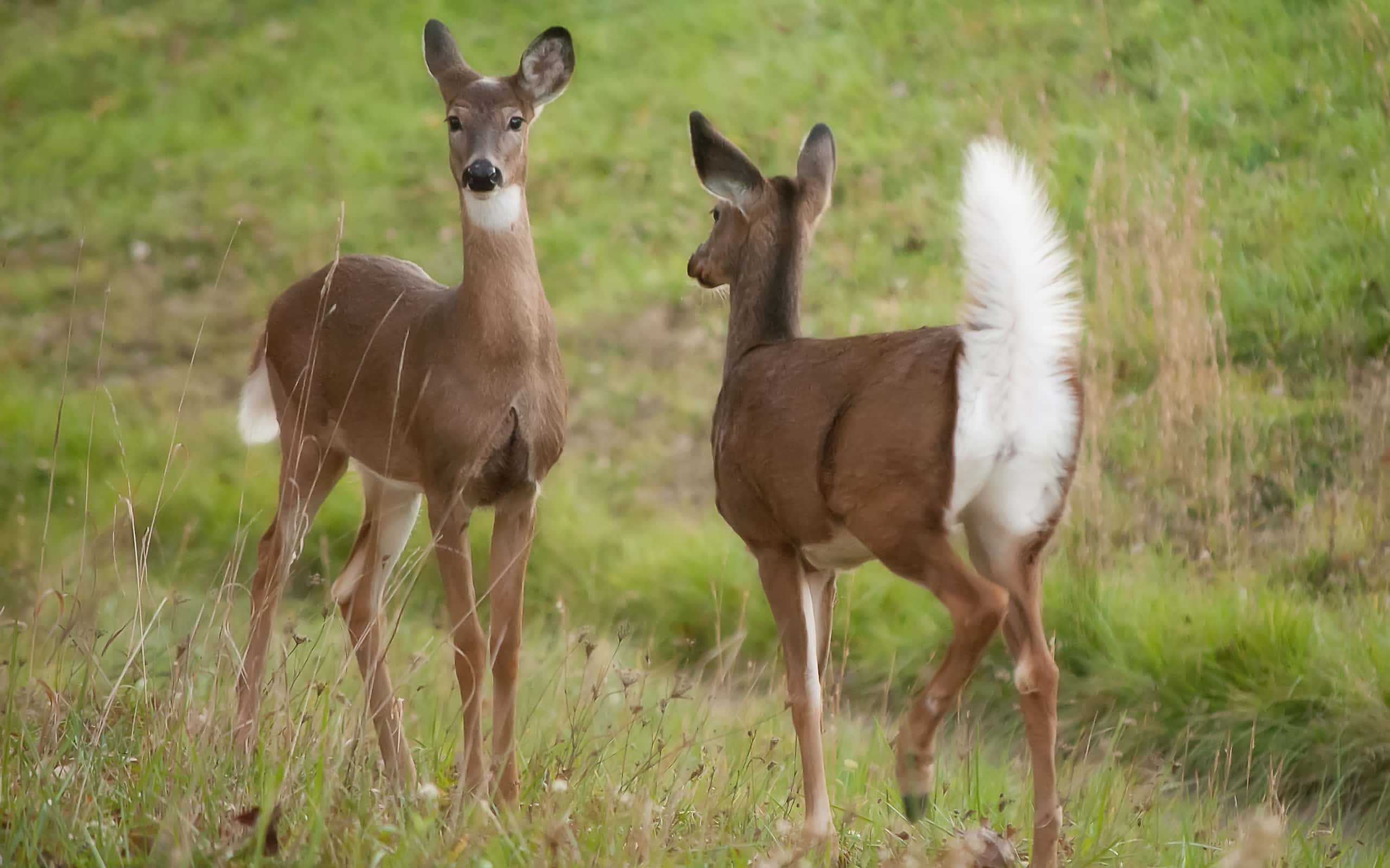Lavender is indeed resistant to deer. Its strong scent, strong taste, and high essential oil content repel deer, and they find this purple flower absolutely unpalatable. So, they’re likely to steer clear of it.
However, there are many more wonderful deer-resistant plants you could add to your garden. Here are nine.
9 Deer-Resistant Plants
Some plants will repel deer simply because they don’t appeal to their sense of smell; others will repel them with their toxic content.
1. Bearded Iris (Iris Germanica)

Irises are known for their striking beauty and tropical vibes.
©yuelan/iStock via Getty Images
Just like lavender, bearded iris has a strong scent that deer tend to avoid. They’re not particularly fond of perfumy smells, which is a big plus for anyone who wants to keep their garden smelling nice and poison-free. While many deer-resistant plants are poisonous, iris is not. This is fortunate, considering that it attracts butterflies and hummingbirds.
Other types of iris may work too, but the bearded iris is usually the best choice for keeping deers at bay. It has an especially strong scent, even compared to other iris types.
- Irises need a minimum of six hours of sunlight daily.
- They bloom in spring and summer.
- They also need full to partial sun exposure and about an inch of water per week.
2. Lamb’s Ear (Stachys Byzantina)
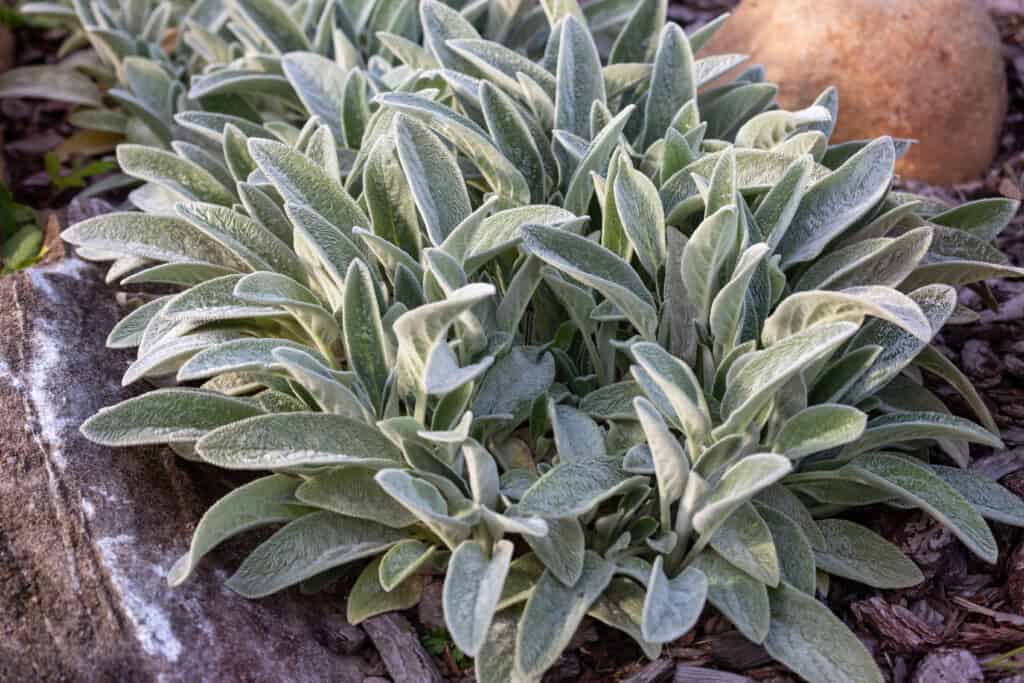
Lamb’s ears are known for their oval-shaped, woolly leaves.
©iStock.com/Yulia-B
Deer also tend to avoid lamb’s ear, perhaps due to its fuzzy leaves. This non-flowering perennial plant is also relatively easy to maintain and grow. It can thrive even in poor and problematic environments, so there’s really no reason not to add it to your garden.
- Lamb’s ear is also drought- and rabbit-resistant.
- It prefers full sun exposure but can tolerate partial shade.
- It needs only about an inch of water per week. However, you should avoid watering the top of the plant to avoid rot.
3. Salvia (Salvia Spp.)

Salvia is an evergreen perennial.
©liewluck/Shutterstock.com
The name salvia comes from the Latin word salveo for to be well. This hints at this plant’s supposed medicinal properties — it may effectively treat and even cure illnesses like obesity, depression, dementia, lupus, and perhaps even cancer. It is also commonly known as sage, hinting further at this plant’s ties with wisdom.
The deer population, however, tends to avoid salvia. This is again likely due to its strong scent, which, to the deer at least, stinks.
- Salvia is drought-, heat-, and salt-tolerant.
- It needs full to partial sun exposure.
- Salvias can bloom from late spring to fall, depending on the type.
- The watering schedule can vary greatly based on species and weather conditions.
4. Peony (Paeonia Lactiflora)
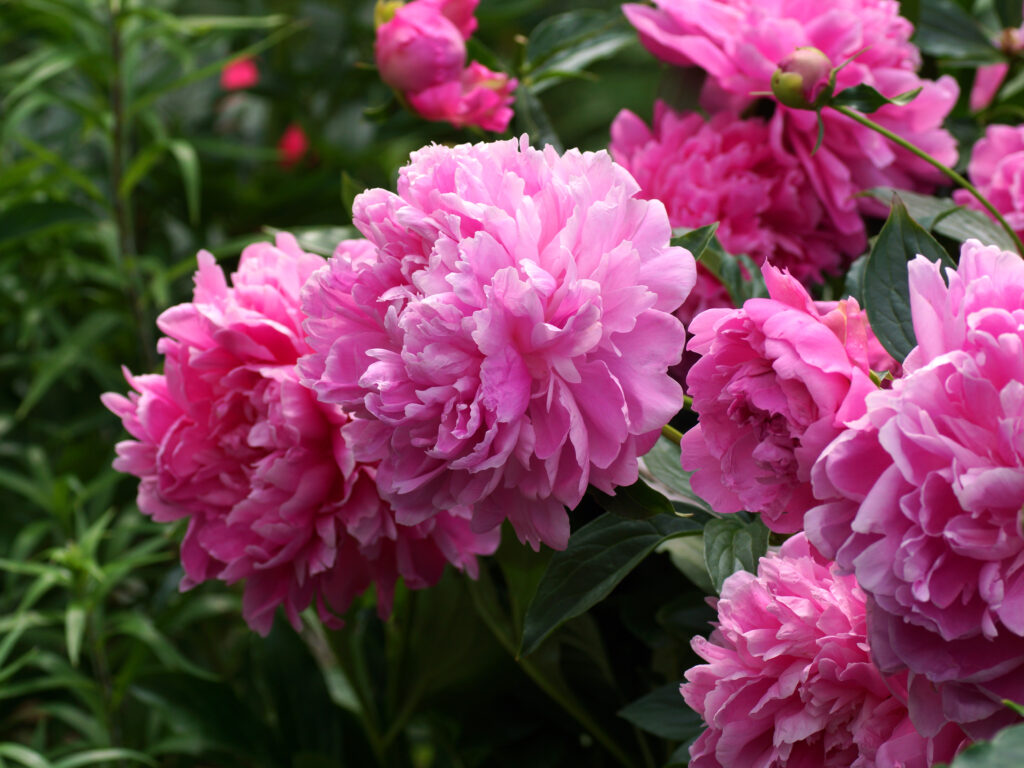
Peonies are a popular choice for weddings, engagements, and graduations, but who says they can’t be a nice addition to your garden or home as well?
©Natali22206/Shutterstock.com
Peonies can make for a beautiful addition to your garden, plus they’re deer-resistant. Deer tend to avoid them not only because of their scent but also the stickiness of the stems. Sticky food is not their first choice!
On top of that, peonies are quite long-lived and come in a variety of colors, including a number of pastels. You can surely find a color that perfectly matches your existing garden aesthetics.
- Most peony types prefer full sun exposure.
- They typically bloom in April, May, or June.
- They are also rabbit-resistant.
- Water them once a week during the dry summer months. Otherwise, water them every two weeks or even less frequently.
5. Bleeding Heart (Lamprocapnos Spectabilis)

One thing to keep in mind is that bleeding hearts contain neurotoxins, which can affect the central nervous system of both humans and many domestic animals.
©Diana Hlachova/Shutterstock.com
Bleeding heart is yet another perennial on the list, primarily known for its heart-shaped leaves (hence, the name). It is resistant to deer and squirrels, perhaps because of its striking color. It’s also relatively easy to grow and maintain, while simultaneously uplifting any garden.
- Bleeding heart grows best in light shade, but can also tolerate full sun.
- It usually blooms from spring to summer.
- Keep the soil lightly moist; not dry, and not soggy.
6. Verbena Homestead Plants (Glandularia Canadensis)

Depending on its type, verbena is perennial or annual.
©Danita Delimont/Shutterstock.com
Verbena plants are also easy to grow but need much more sun than bleeding hearts. They’re known to attract butterflies and hummingbirds, while simultaneously repelling deer and insects. These low-maintenance plants also come in several colors, including white, purple, and yellow.
- Verbena needs about one inch of water per week but may need more during the summer.
- Verbenas have a long blooming season. They typically bloom from May through October.
- They need full sun exposure for at least six hours a day.
7. Daffodil (Narcissus)

Daffodils are often associated with rebirth.
©Andrew Fletcher/Shutterstock.com
Daffodils are one of the most deer-resistant plants out there. They contain lycorine, an alkaloid that’s toxic to many mammals, including deer. So, they typically won’t daffodils them even if they’re starving. On top of that, daffodils come in a variety of colors, ranging from classic yellow to pink, making them the perfect addition to any garden.
- Daffodils also need about one inch of water every week.
- They thrive in full sun.
- Daffodils bloom in spring.
8. Foxglove (Digitalis Purpurea)
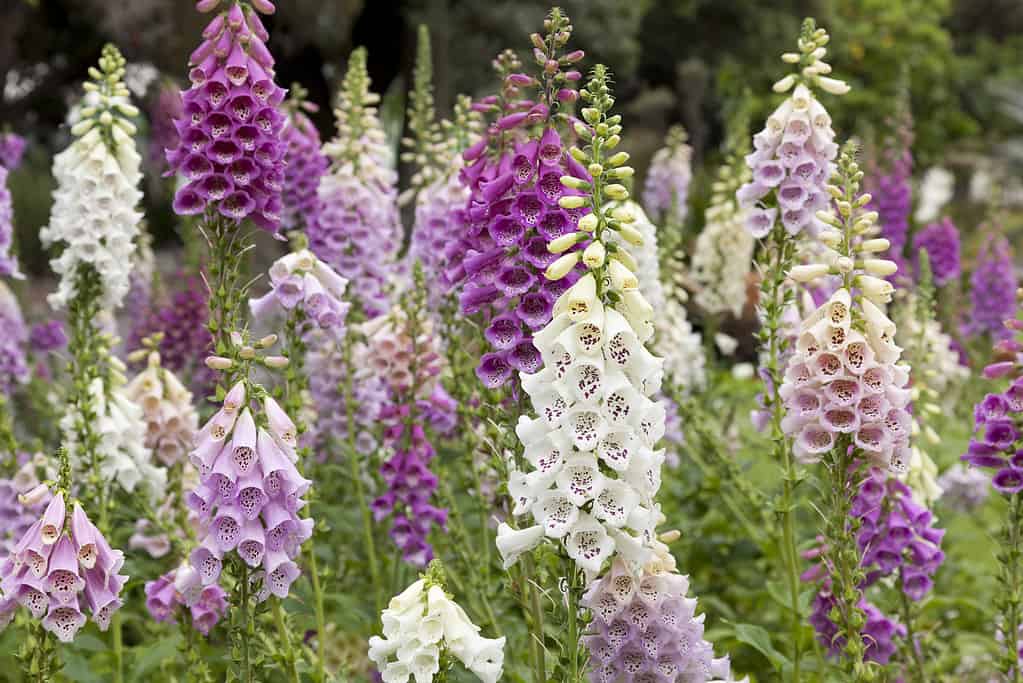
This tall, bell-shaped plant is a real show-stopper.
©PicturePartners/iStock via Getty Images
Foxglove is another poisonous plant, so it’s no wonder that deer tend to steer clear of it. This tall, biennial bloomer is known for its tall spikes and can easily add depth and visual interest to your garden.
- Foxglove needs full to partial sun exposure.
- It blooms mainly in early summer.
- It also needs an inch of water per week and thrives in moist soil.
9. Coneflower (Echinacea Spp.)
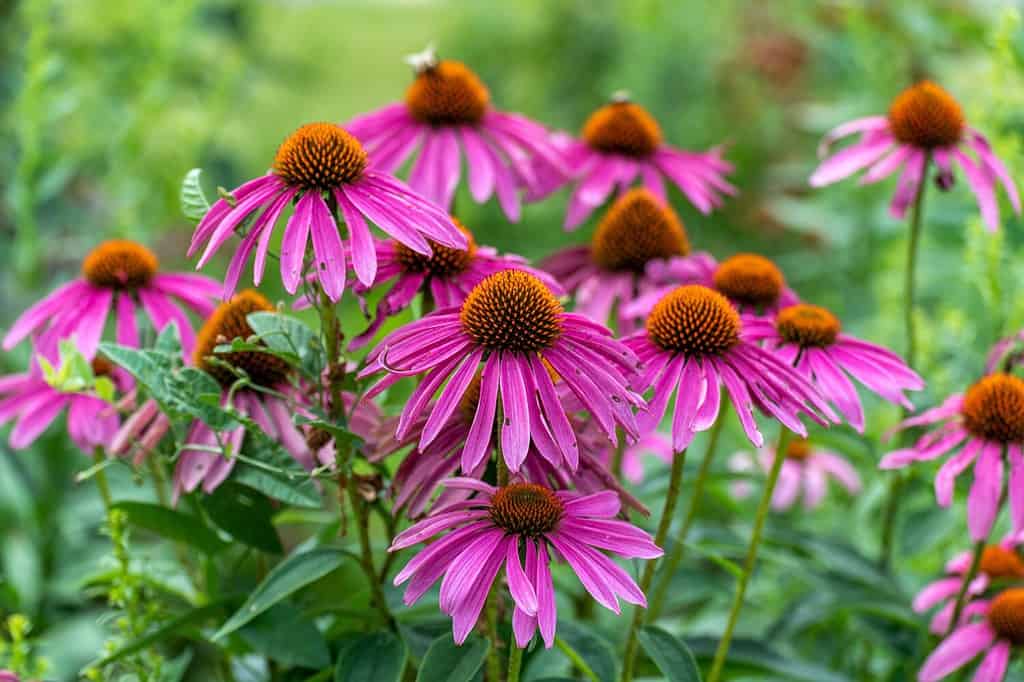
Coneflowers can grow three to four feet tall.
©Barbara Smits/Shutterstock.com
Finally, coneflowers could be considered semi-resistant to deer, with young or freshly planted plants having higher chances of being eaten. They’re also low-maintenance plants, but new plants may need some more watering. Purple coneflowers are known for attracting bees, hummingbirds, and butterflies.
- Coneflowers need full to partial sun exposure.
- Once established, they require about an inch of water per week.
- They bloom from June through September.
Thank you for reading! Have some feedback for us? Contact the AZ Animals editorial team.

